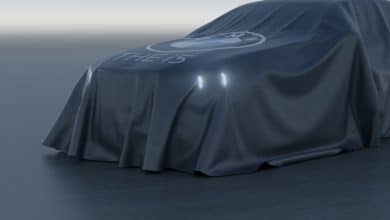Polestar 4 Unveiled: A Bezel-less Coupe SUV

Brand expansion Polestar continues. After the unveiling of the Polestar 3, this two-row SUV that will arrive in the coming months, it is now the turn of the Polestar 4 to be brought to light. Even if its name is not related to its positioning in the range, being in fact inserted between the Polestar 2 and Polestar 3, it promises to make its place with several unique characteristics, including the absence of bezel.
Polestar defines itself as a brand that puts automotive design first. This is what the company’s most recent creation, the Polestar 4, sends as a message. It incorporates several elements that are taken from the Polestar Precept concept, including the split headlights and the lights whose ends dip downwards. The absence of a rear window is also an element that was present on the Precept concept, an idea that is unusual for a coupé SUV, to say the least. Rear visibility is ensured by a camera mirror, comprising a high-definition camera placed on the roof of the vehicle, which feeds a screen that replaces the central mirror.

For the rest, the lines are similar to the brand’s other products. We always notice this sober and distinguished approach, with subtle, but elegant lines, but also wheels of a unique design. They are also 20 inches in standard equipment, and their size can reach 22 inches as an option. Some elements are also designed to improve the aerodynamics of this vehicle, such as the low front, retractable handles and frameless windows. By the way, in terms of dimensions, the Polestar 4 has a length of 4839 millimeters, a height of 1544 millimeters and a wheelbase of 2999 millimeters, making it more like a large car than a proper SUV.
Cabin in continuity
Unsurprisingly, the cabin offers a sober approach like the rest of the range. First there is a 10-inch screen placed in front of the driver and which acts as instrumentation. In the center, a 15.4-inch screen in landscape orientation, a difference from what we knew until now. These interfaces are still powered by Android Automotive, including Google’s suite of apps such as Google Maps, Google Play and Google Assistant.

All Polestar 4s feature a full-size glass roof that can be fitted with an optional electrochromatic feature, which tints the glass at the touch of a button. This glazed roof stretches above the rear passengers to create an intake of light, but also to compensate for the absence of a window. This approach aims to improve the space for the passengers, but also to create a unique ambience of immersion for the rear passengers, who have access to a dedicated screen to control the air conditioning.
In terms of finish and materials, the manufacturer claims that the Polestar 4 uses a new philosophy called “soft tech”, which takes its inspiration from the fashion and sportswear sector. The choice of materials is new, not repeating what is found in other models of the brand. Moreover, many of these materials are made from recycled materials, and they are almost all made from the same base, facilitating recycling at the end of the vehicle’s life. It will also be possible to trace the origin of certain materials that make up the battery, and Polestar will reveal the carbon footprint of the vehicle in 2024.

Engines and battery
While details surrounding the North American releases are still unknown, it’s a safe bet they’ll be similar to what’s seen in other markets. First, the vehicle is equipped with a 102 kilowatt-hour battery, regardless of whether it is single or dual motor, equipped with a heat pump for thermal management. The single-motor version will be rear-wheel drive, and will offer 200 kilowatts (272 horsepower) and 253 lb-ft of torque. Its range is estimated at 480 kilometers according to the EPA cycle.
The twin-motor version will make Polestar 4 the fastest vehicle the brand has ever built. Its two permanent magnet synchronous motors provide 400 kilowatts (544 horsepower) and 506 lb-ft of torque, enabling acceleration from 0 to 96 km/h in 3.8 seconds. Although the autonomy of this version has not yet been revealed, the manufacturer claims that a clutch system allows the front motor to be disconnected to improve autonomy. Several driving modes will vary the personality of the vehicle, depending on the manufacturer.

In terms of charging, the manufacturer announces a maximum power accepted on a fast terminal of 200 kilowatts, while alternating current charging (like at home) can reach a power of 22 kilowatts, which is very high.
Although pricing is not yet known for the Canadian market, the marketing strategy will be similar to other models. A few option packages, such as Plus, Pilot and Performance, will be offered. The Pilot package will include all the hardware to facilitate autonomous driving, while the Performance package will add, among other things, Brembo brakes with four-piston gold calipers. In the United States, the starting price is US$60,000. The vehicle will arrive here in 2024, having first been marketed in China by the end of the current year.











